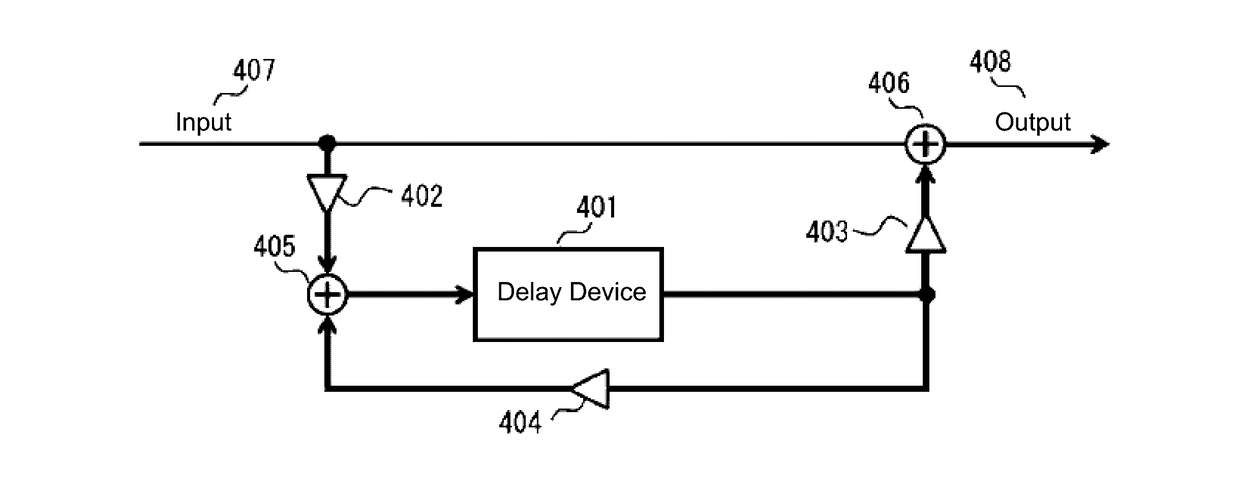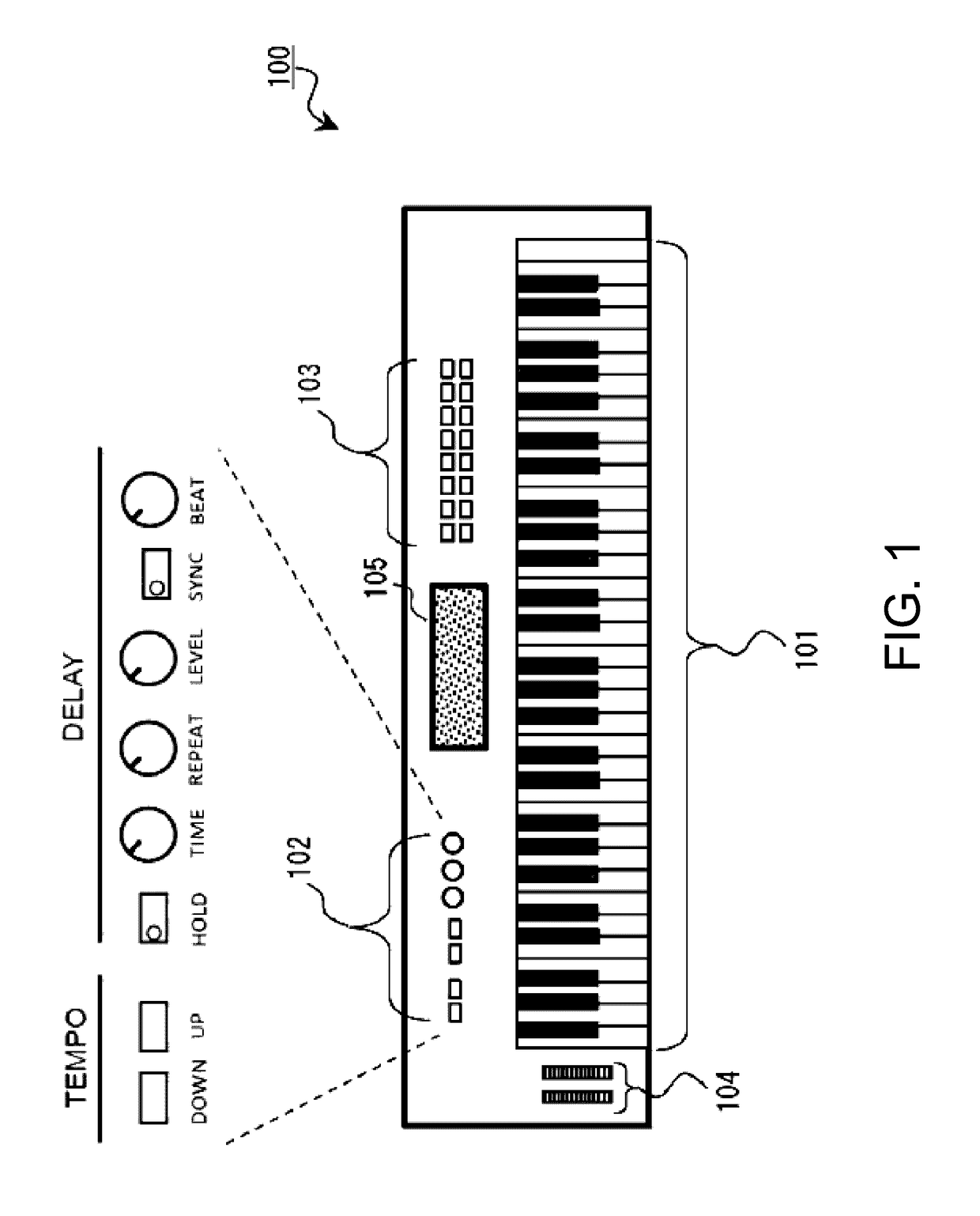Audio processing device, method of audio processing, storage medium, and electronic musical instrument
a technology of audio processing and audio, applied in the direction of instruments, electrotrophonic instruments, etc., can solve the problems of accumulating shifts and delay time not being completely synchronized, and achieve the effect of reducing the detected time differen
- Summary
- Abstract
- Description
- Claims
- Application Information
AI Technical Summary
Benefits of technology
Problems solved by technology
Method used
Image
Examples
Embodiment Construction
[0038]The inability to completely synchronize the delay time of a delay process (which is a type of audio effect process) to the tempo of an automatic performance (automatic play) in conventional technologies is due to the following reasons. First, the automatic performance control process that advances the automatic performance is typically executed by a central processing unit (CPU). The CPU implements a sequence clock counter that cyclically counts a hardware timer (that is, a system clock) from zero to a maximum sequence clock count that corresponds to a time obtained by dividing one beat of the specified tempo by a prescribed number (such as 480). This sequence clock counter issues a sequence clock interrupt each time the system clock count reaches the maximum sequence clock count. The CPU also executes the automatic performance control process, which advances the automatic performance in synchronization with these sequence clock interrupts. Meanwhile, the delay process is typi...
PUM
 Login to View More
Login to View More Abstract
Description
Claims
Application Information
 Login to View More
Login to View More - R&D
- Intellectual Property
- Life Sciences
- Materials
- Tech Scout
- Unparalleled Data Quality
- Higher Quality Content
- 60% Fewer Hallucinations
Browse by: Latest US Patents, China's latest patents, Technical Efficacy Thesaurus, Application Domain, Technology Topic, Popular Technical Reports.
© 2025 PatSnap. All rights reserved.Legal|Privacy policy|Modern Slavery Act Transparency Statement|Sitemap|About US| Contact US: help@patsnap.com



